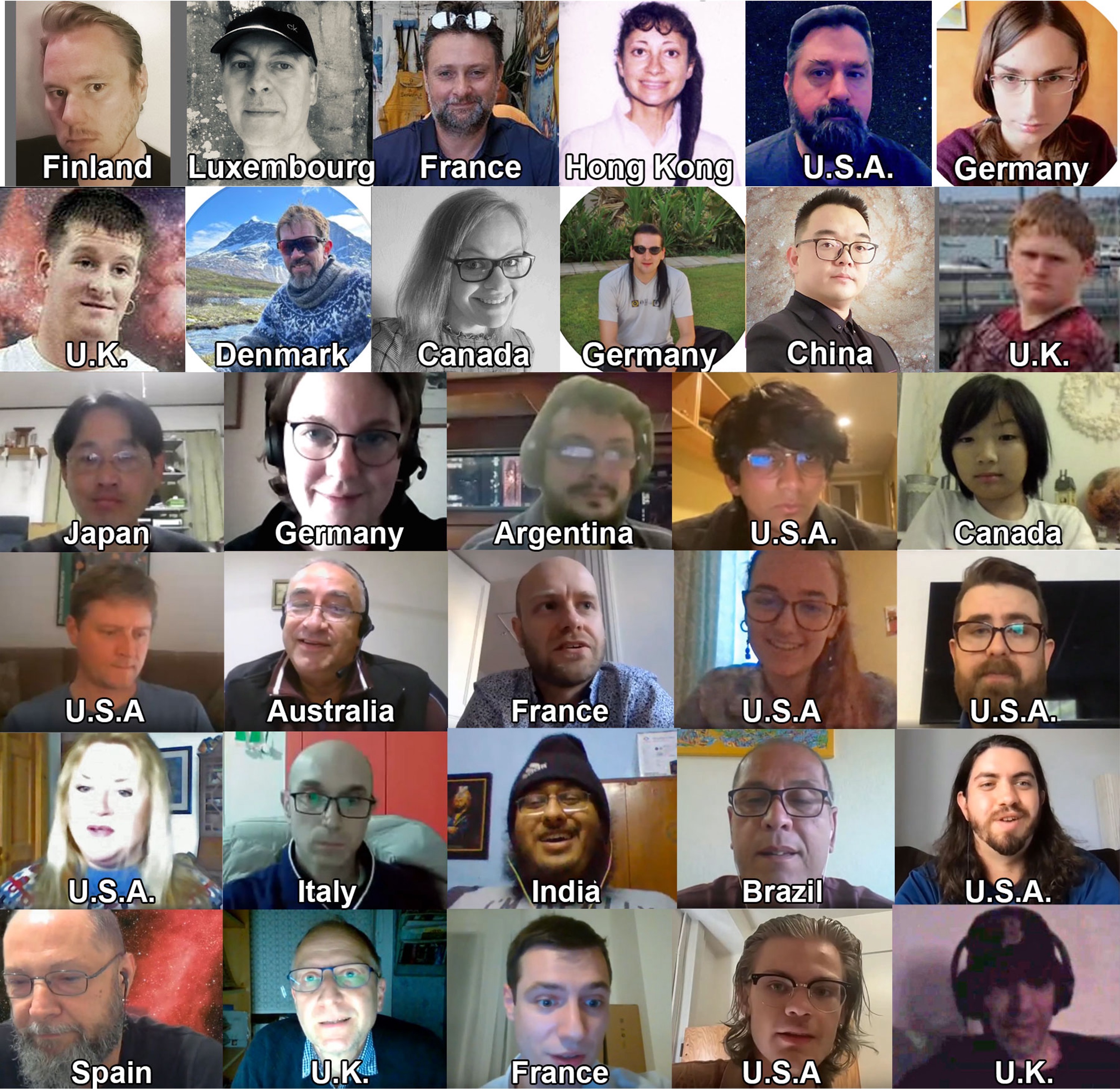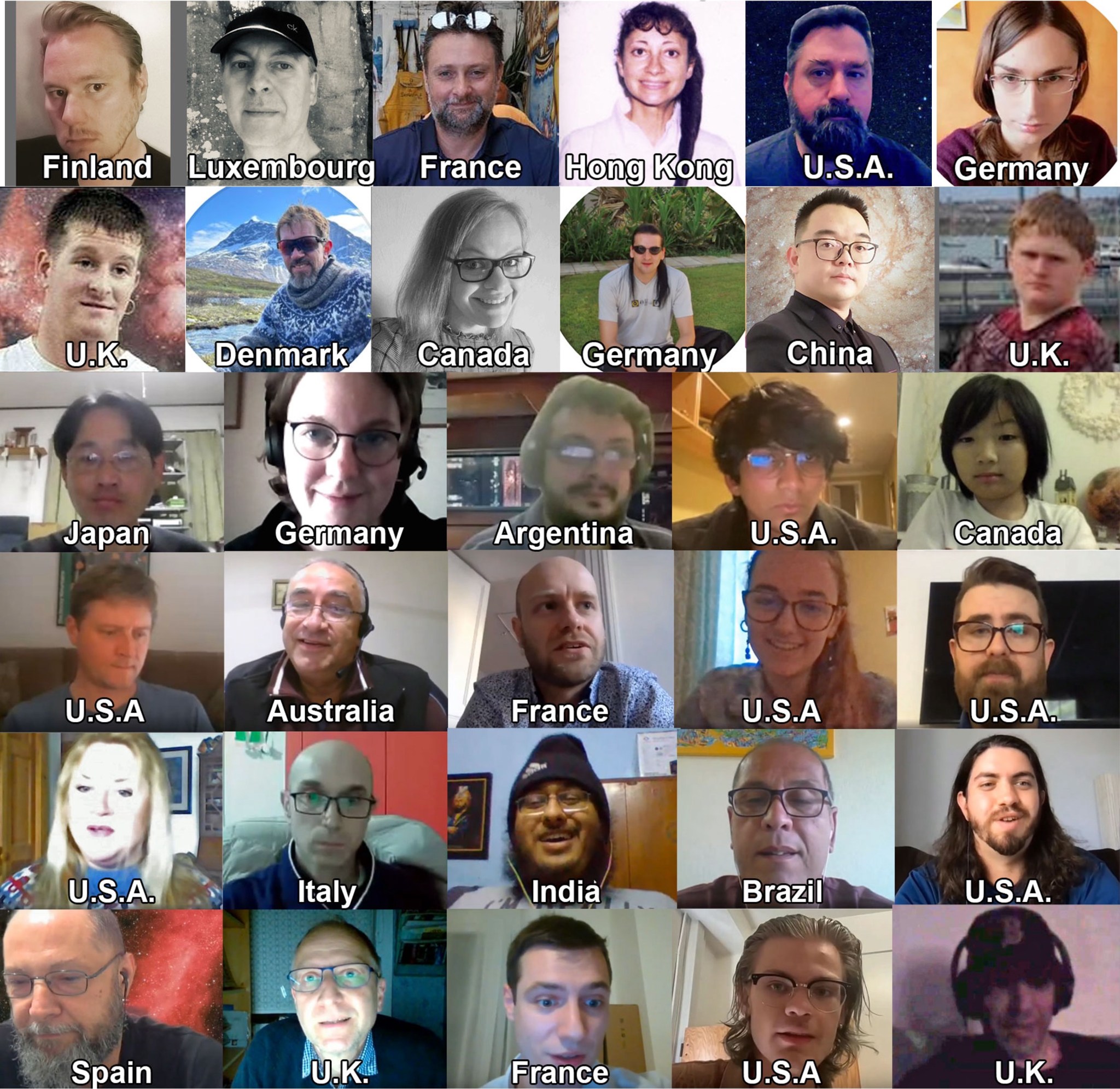Backyard Worlds Volunteers Complete Ten Million Classifications in an Epic Search for New Objects Among the Nearest Stars
The Backyard Worlds: Planet 9 and Backyard Worlds: Cool Neighbors projects invite members of the public to search images from NASA’s Wide-Field Infrared Survey Explorer (WISE) mission to find new objects among the nearest stars.

2 min read
Backyard Worlds Volunteers Complete Ten Million Classifications in an Epic Search for New Objects Among the Nearest Stars

Top (l-r): Arttu Sainio, Frank Kiwy, Jean Marc Gantier, Marianne Michaels, Les Hamlet, Melina Thévenot,
2nd row (l-r): Kevin Apps, Nikolaj Stevnbak Andersen, Rebekah Russwurm, Jörg Schümann, Guoyou Sun, Tom Bickle
3rd row (l-r): Michiharu Hyogo, Katharina Doll, Hugo Durantini-Luca, Yadukrishna Raghu, Hiro Higashimura,
4th row (l-r): Ben Pumphrey, Zbigniew Wedracki, Guillaume Colin, Anya Frazer, Dan Caselden
4th row (l-r): Kristin Grant, Maurizio Ventura, Harshdeep Singh, Celso Pessanha Machado, Austin Rothermich
6th row (l-r): Edoardo Antonini, Peter Jalowiczor, Leopold Gramaize, Hunter Brooks, William Pendrill
The Backyard Worlds: Planet 9 and Backyard Worlds: Cool Neighbors projects invite members of the public to search images from NASA’s Wide-Field Infrared Survey Explorer (WISE) mission to find new objects among the nearest stars. These projects share a science team and many volunteers–a total of more than 175,000 participants from more than 167 countries. Last week, the combined efforts of this giant Backyard Worlds team reached an incredible milestone: a total of 10,000,000 classifications of WISE mission image sets.
Since 2017, when the first Backyard Worlds project (Planet 9) launched, these projects have discovered more than 3800 nearby objects, including 12% of all the known stellar and substellar objects out to a distance of 60 light years. Those objects include many rare brown dwarfs, balls of gas that are not massive enough to become stars. Among them are roughly 15 Y dwarfs–the rarest kind of brown dwarf (only about 50 are known). The discoveries also include an entirely new kind of object, the “extreme T subdwarfs,” relics from our Galaxy’s earliest days.
This work has resulted in 20 refereed publications, with more than 40 volunteers named as co-authors on those refereed publications. It has also led to 11 research notes and 25 presentations at meetings of the American Astronomical Society. Several project volunteers have participated in observing runs at NASA’s Infrared Telescope Facility and even won time on NASA’s James Webb Space Telescope.
Best of all, there’s much more data to explore, and the WISE mission continues to scan the skies! So come join the fun and make your own discoveries at backyardworlds.org and coolneighbors.org!
Share
Details
Related Terms
What's Your Reaction?








































